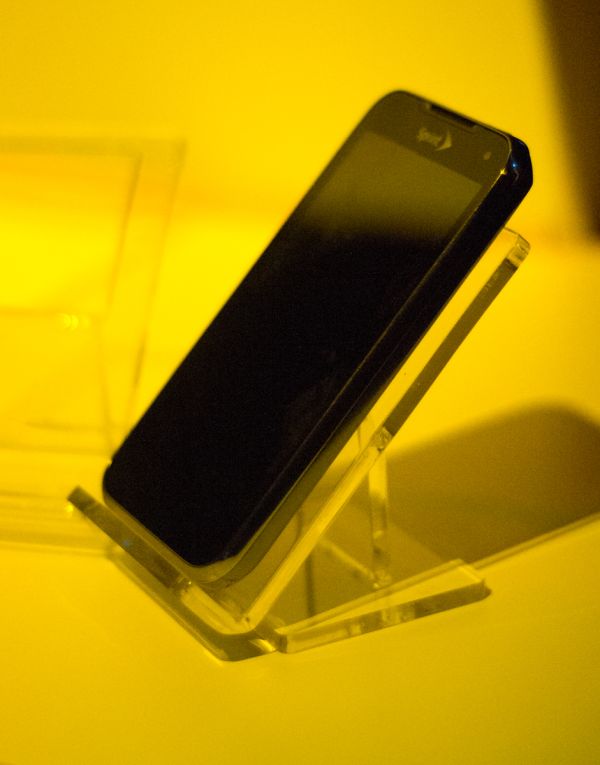





Operation of the handset was left to Sprint's representatives, though they were happy to load up websites and demonstrate UI operation to our heart's content. And, the results were as good as expected. Software is obviously stable and satisfying, the hardware they had on hand matches Verizon Wireless' variant in shape and internals, though Sprint would neither confirm nor deny that the two variants would be identical in terms of components and size. What they would confirm is that they would have several NFC-enabled devices available by the end of the year, and that all of their NFC handsets would support Google Wallet.

The LG Viper 4G will slot-in below the Galaxy Nexus as a mid-range LTE device, and will be priced accordingly. It features a 4" WVGA LCD display in a comfortable form factor, and runs Android 2.3 (Gingerbread), though Ice Cream Sandwich should follow in the second half of 2012. The SoC was confirmed as a Qualcomm-sourced 1.2 GHz dual-core solution, most likely APQ8060 paired with MDM9600 for connectivity. Sprint markets the device as being an ecofriendly solution, though that seems to be limited to a power sipping charger and casing made from 35% post-consumer recycled materials.
 ierra Wireless Tri-Network Hotspot in Optional Dock
ierra Wireless Tri-Network Hotspot in Optional DockLastly, the Sierra Wireless Tri-Network Hotspot takes the cake for unlimited connectivity options. The device looked much thicker than competing LTE and 3G products like Novatel's MiFi. Making room for as many as three cellular radios is no easy feat, and hopefully some room remained for a beefy battery to power those radios. Details for that device remain particularly scant, though we'll be sure to report in as we learn more.
Sprint also had several older handsets available, including their full line of WiMax devices, and the first device with a PCS based Direct Connect solution, the Motorola Admiral. In speaking with Sprint's reps, it's clear that unlike six or seven years ago, the Direct Connect feature is not terribly consumer facing, and is really best targeted at enterprise and industrial deployment. To that end, it's likely that most of the handsets we'll see with the feature will be enterprise oriented with an emphasis on ruggedness and reliability.
Sprint's position among the Big Three wireless carriers is not likely to change in the near term. Their growing relationships with spectrum solutions partners like Lightsquared and ClearWire demonstrate a commitment to developing as strong an LTE network as they are in a position to provide. And their commitment to customers is no less strong, they will be supporting the WiMax network they are transitioning away from until at least 2014; which means that today's WiMax device buyers will be at the end of their contracts around the time Sprint expects to complete its nationwide LTE network.
]]>Artikel Terkait:




0 comments:
Post a Comment